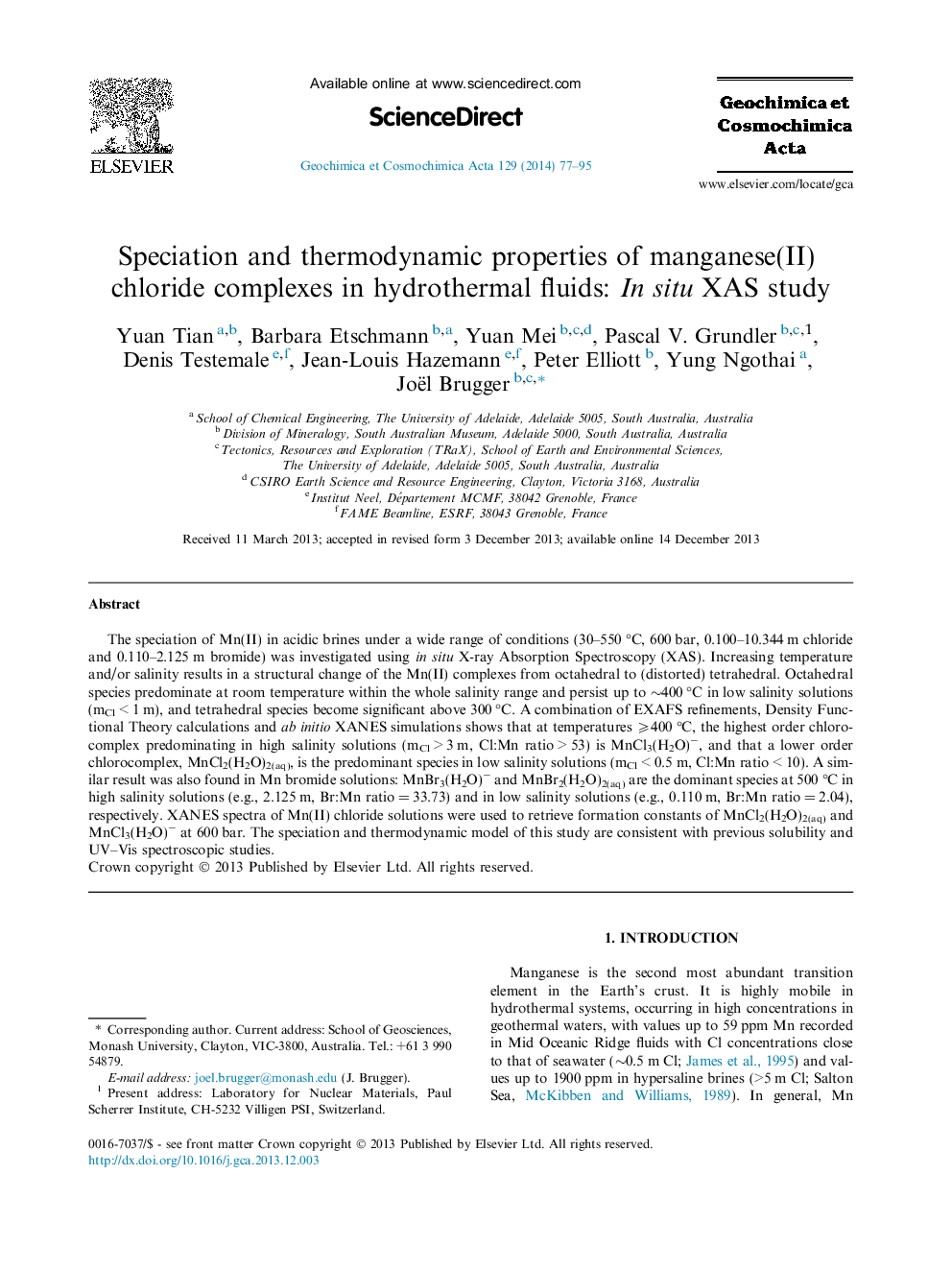| Article ID | Journal | Published Year | Pages | File Type |
|---|---|---|---|---|
| 4702122 | Geochimica et Cosmochimica Acta | 2014 | 19 Pages |
The speciation of Mn(II) in acidic brines under a wide range of conditions (30–550 °C, 600 bar, 0.100–10.344 m chloride and 0.110–2.125 m bromide) was investigated using in situ X-ray Absorption Spectroscopy (XAS). Increasing temperature and/or salinity results in a structural change of the Mn(II) complexes from octahedral to (distorted) tetrahedral. Octahedral species predominate at room temperature within the whole salinity range and persist up to ∼400 °C in low salinity solutions (mCl < 1 m), and tetrahedral species become significant above 300 °C. A combination of EXAFS refinements, Density Functional Theory calculations and ab initio XANES simulations shows that at temperatures ⩾400 °C, the highest order chlorocomplex predominating in high salinity solutions (mCl > 3 m, Cl:Mn ratio > 53) is MnCl3(H2O)−, and that a lower order chlorocomplex, MnCl2(H2O)2(aq), is the predominant species in low salinity solutions (mCl < 0.5 m, Cl:Mn ratio < 10). A similar result was also found in Mn bromide solutions: MnBr3(H2O)− and MnBr2(H2O)2(aq) are the dominant species at 500 °C in high salinity solutions (e.g., 2.125 m, Br:Mn ratio = 33.73) and in low salinity solutions (e.g., 0.110 m, Br:Mn ratio = 2.04), respectively. XANES spectra of Mn(II) chloride solutions were used to retrieve formation constants of MnCl2(H2O)2(aq) and MnCl3(H2O)− at 600 bar. The speciation and thermodynamic model of this study are consistent with previous solubility and UV–Vis spectroscopic studies.
